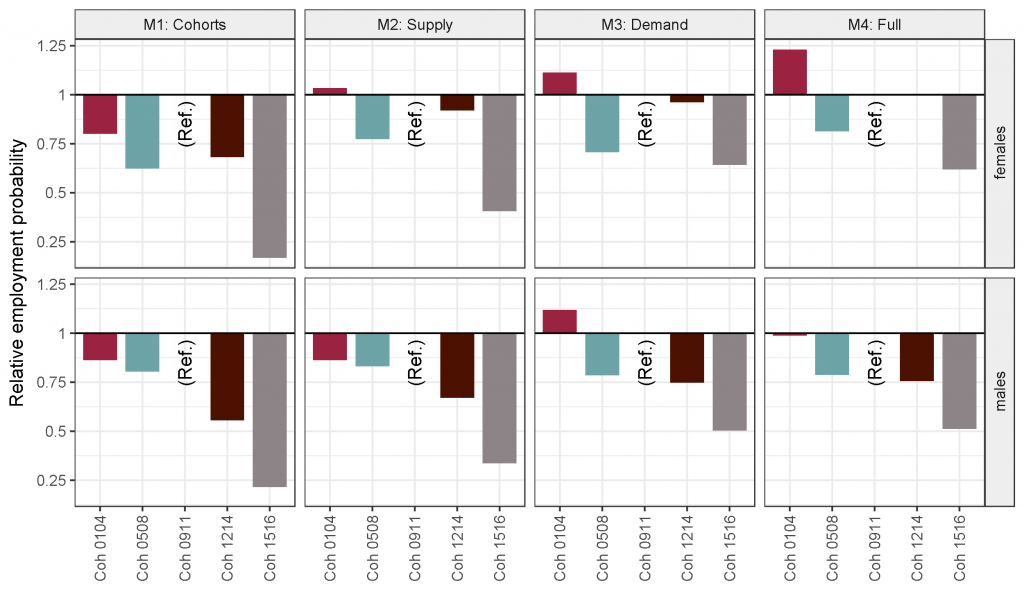This study uses comprehensive register data to analyze employment among refugees from 31 different countries of origin. The time it takes to start employment differs markedly across the five labor market access cohorts investigated. Recent cohorts tend to do less well than earlier cohorts.
Employing a theoretical framework we hypothesize the impact of individual supply-side characteristics and contextual demand-side conditions. These variables explain part of the employment gaps across cohorts. The figure below displays unconditional employment gaps across cohorts obtained from a model without any control variables (M1), the gaps after controlling for supply (M2) and demand (M3), respectively, and the gaps after controlling for both (M4).

On the supply side, education attainment and labor market closeness are influencing transition times. Refugees with upper secondary vocational education the gaps are explained in part by potential labor market experience, proxied by vogtenhuber-etal_2018_AM-Integration-Asyl-WP